- Scientific name: Ranunculus micranthus
- Species of Greatest Conservation Need (MA State Wildlife Action Plan)
- Endangered(MA Endangered Species Act)
Description
Small-flowered buttercup is an inconspicuous, spring-flowering member of the buttercup family (Ranunculaceae), typically found on rocky slopes. The 20-50 cm (8-20 in) erect stem and leaves are covered in fine, straight hairs. Each of the six or so ground-hugging basal leaves has a relatively long (~5 cm; 2 in) petiole with a round blade that is flattened at the base and has rounded teeth separated by sharp, small incisions (occasionally divided). Stem leaves are largely sessile and are divided into three or four narrow sections, which may be toothed. The stem may branch, and each stem is topped by one to several tiny flowers (5-6 mm across; 0.2 in) with yellow petals. The whole plant is covered with short hairs. This species blooms early in the spring before the leaves of canopy trees shade the forest floor. It then fruits and withers away by early July.
Small-flowered buttercup is one of several small buttercups that occur in Massachusetts. Hairy (villous) stems and leaves help to distinguish this species from other small buttercups. In small-flowered buttercup, some roots are also conspicuously thickened.
Kidney-leaf buttercup (R. abortivus) and Allegheny crowfoot (R. allegheniensis) have kidney-shaped basal leaves, and are completely hairless.
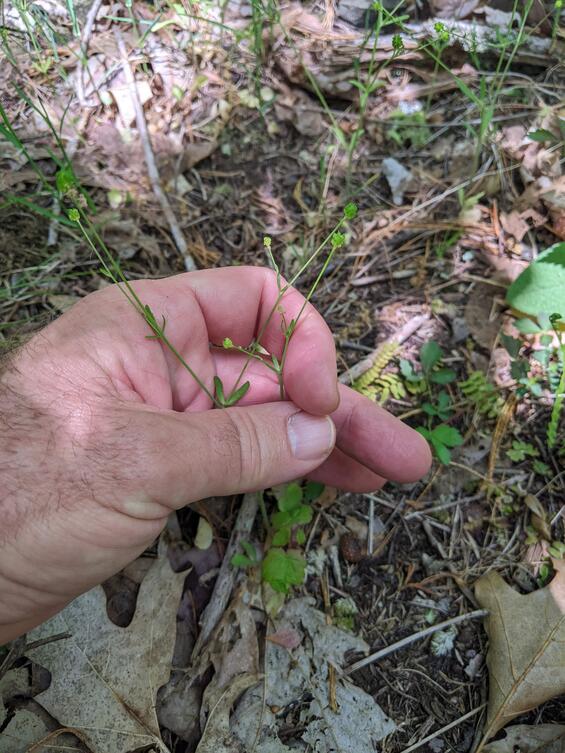
Small-flowered Buttercup (Ranunculus micranthus)

Small-flowered Buttercup (Ranunculus micranthus)
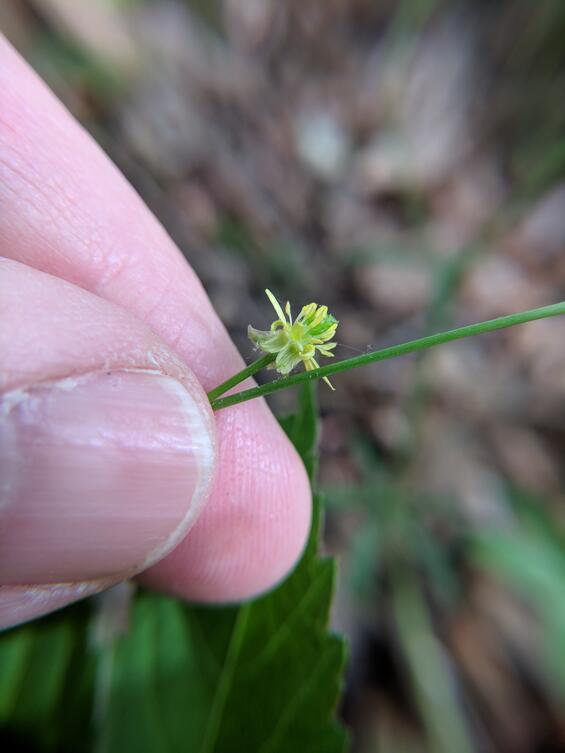
Small-flowered Buttercup (Ranunculus micranthus)
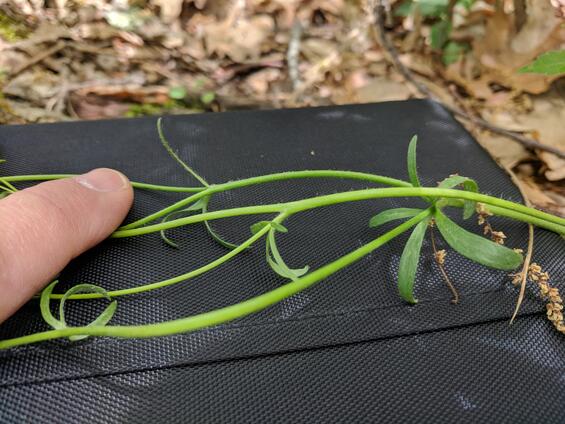
Life cycle and behavior
This species is an herbaceous perennial.
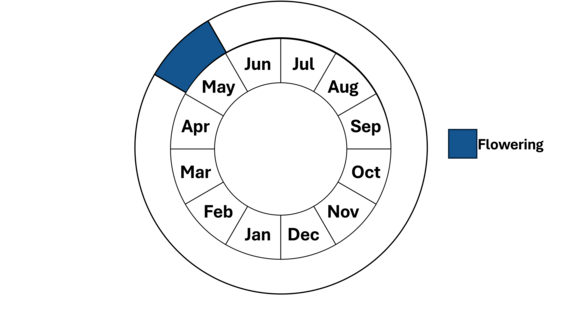
Population status
Small-flowered buttercup is listed under the Massachusetts Endangered Species Act as endangered. All listed species are protected from killing, collecting, possessing, or sale, and from activities that would destroy habitat and thus directly or indirectly cause mortality or disrupt critical behaviors. MassWildlife’s Natural Heritage & Endangered Species Program database has 9 records from 7 counties across the state; Norfolk, Suffolk, Essex, Middlesex, Berkshire, Bristol, Hampden, and Worcester. Only 4 of those records are within the last 25-year period.
Distribution and abundance
Small-flowered buttercup occurs from Massachusetts to Illinois and South Dakota, south to northern Georgia and Arkansas. It is widespread but uncommon throughout most of its range.
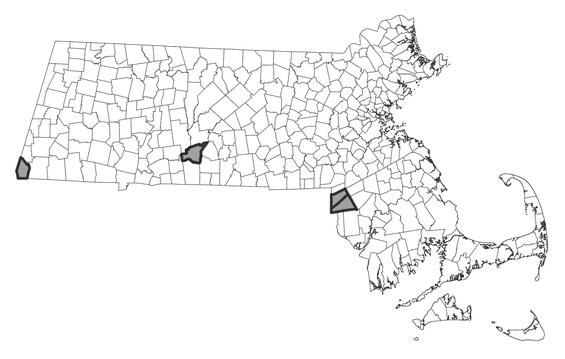
Distribution in Massachusetts. 1999-2024. Based on records in the Natural Heritage Database.
Habitat
Massachusetts is at the northern end of the range of small-flowered buttercup, and it typically occurs here on south-facing slopes in patches of soil between rock outcrops. Small-flowered buttercup occurs under a light to moderate canopy, often in areas with basaltic or other mafic (iron- and magnesium-rich) bedrock. Trees include red oak (Quercus rubra), pignut hickory (Carya glabra), sugar maple (Acer saccharum), hop hornbeam (Ostrya virginiana), and flowering dogwood (Benthamidia florida). Associated species include ebony spleenwort (Asplenium platyneuron), blunt-lobed woodsia (Woodsia obtusa), early saxifrage (Micranthes virginiensis), round-lobed hepatica (Anemone americana), and three-lobed violet (Viola palmata).
Healthy habitats are vital for supporting native wildlife and plants. Explore habitats and learn about conservation and restoration in Massachusetts.
Threats
Threats to small-flowered buttercup include residential and commercial development, invasive plants, canopy closure, and rockslides. Two populations are adjacent to dense residential areas and receive significant recreational use from hikers, mountain bikes, motorbikes and all-terrain vehicles, all of which threaten the populations.
Conservation
Very little is known about what best management practices will maintain or expand these populations, but limiting the effect of recreational uses should be considered. Populations should be monitored regularly. All active management of rare plant populations (including invasive species removal) is subject to review under the Massachusetts Endangered Species Act and should be planned in close consultation with the MassWildlife’s Natural Heritage & Endangered Species Program.
The exact ecological needs of this species are not well understood. As this plant is under-surveyed, standard information is needed such as lists of associated species, comments on water and habitat quality and threats, and assessments of soil conditions and phenology.
Research is needed to determine whether this plant can be grown in a greenhouse or garden setting for purposes of reintroductions. If habitat degradation accelerates losses of current populations, this strategy could prove useful to long-term conservation of this species.
References
Gleason, H. A., and A. Cronquist. 1991. Manual of Vascular Plants of Northeastern United States and Adjacent Canada, 2nd edition. The New York Botanical Garden, Bronx, NY.
USDA, NRCS. 2010. The PLANTS Database (http://plants.usda.gov). National Plant Data Center, Baton Rouge, LA.
NatureServe. 2009. NatureServe Explorer: An online encyclopedia of life [web application]. Version 7.1. NatureServe, Arlington, VA. http://www.natureserve.org/explorer.
Contact
| Date published: | May 12, 2025 |
|---|